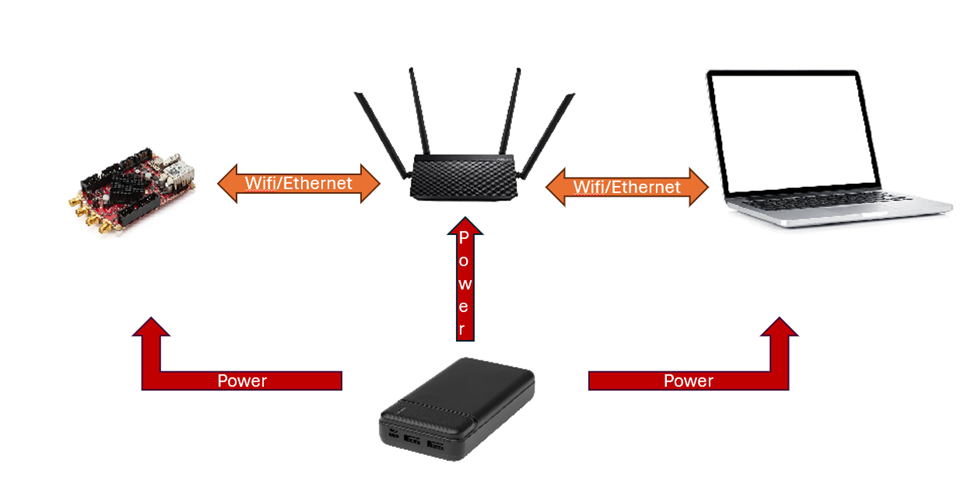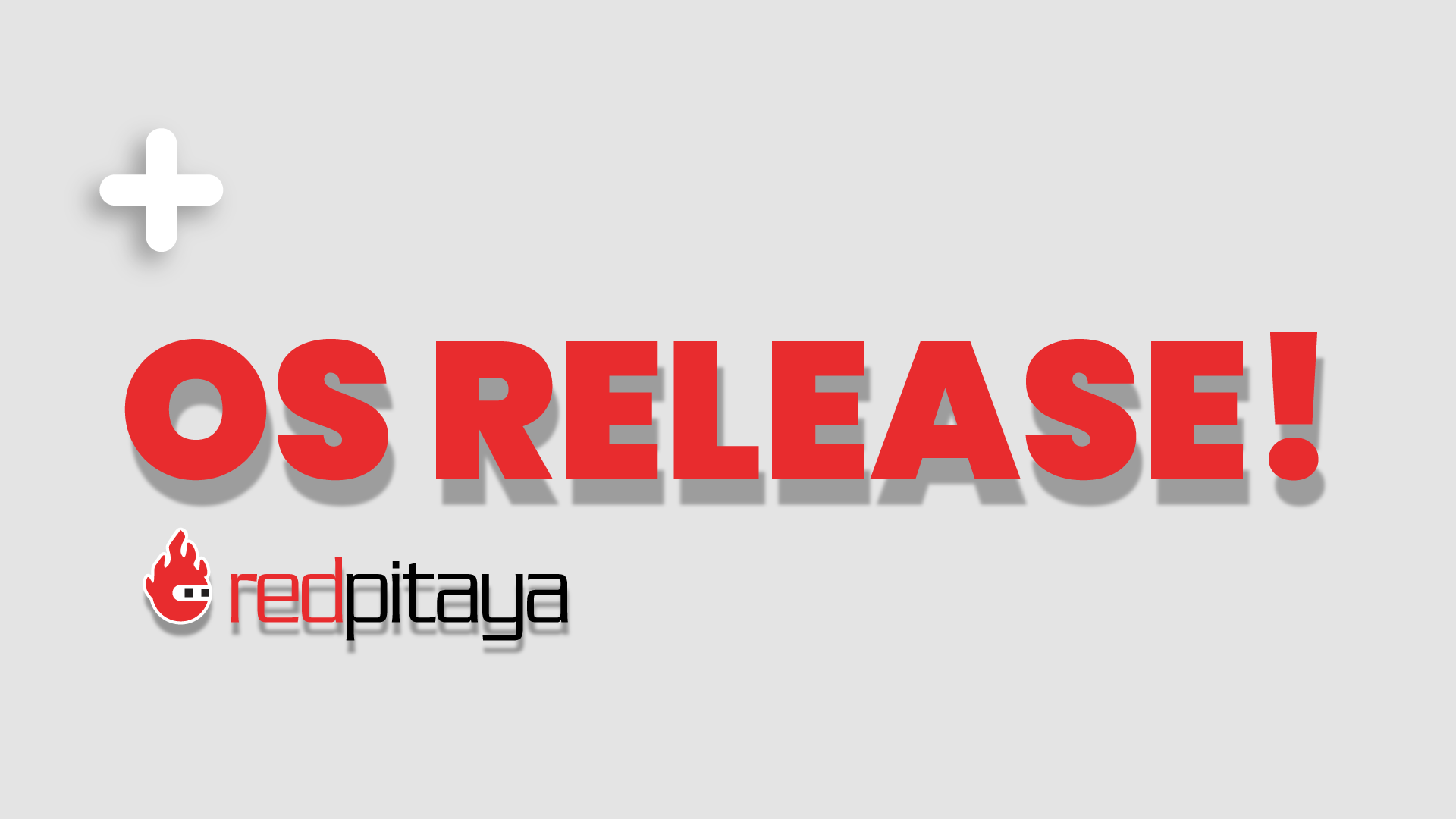Building a Portable Demo Setup for a Red Pitaya Board
- Posted by
 Red Pitaya Team
, October 9, 2024
Red Pitaya Team
, October 9, 2024

In the world of electronics and IoT, having a portable and efficient demo setup can make a significant difference in showcasing your projects. Recently, we started working on creating a compact and versatile demo setup for a Red Pitaya board, an open-source high speed measurement and control tool. Here's a breakdown of the components we used and how they come together to form a powerful demonstration kit.

In this setup, the Red Pitaya board is connected to a portable router, which serves as the central hub for network connectivity. The router can connect to the internet via Wi-Fi or Ethernet, and it may include a SIM card slot for mobile data access, ensuring connectivity even in remote locations. The Red Pitaya board communicates with the router through a Wi-Fi or Ethernet connection, allowing it to send and receive data. A laptop is also connected to the router, enabling real-time monitoring and control of the Red Pitaya board. This setup is powered by a high-capacity power bank, which supplies energy to the board, router, and laptop, ensuring continuous operation without the need for a fixed power source. The use of appropriate cables, including Type-C and angled USB cables, ensures efficient power management and a clutter-free environment, making this setup ideal for fieldwork and demonstrations.
Components Overview
Portable Router
A portable router provides essential network connectivity for your Red Pitaya board and other devices. Choose a model with both Wi-Fi and Ethernet options, and consider one with a SIM card slot for mobile data access. A built-in battery and USB-C charging capability ensure continuous operation, even in remote locations.
Power Bank
A high-capacity power bank is crucial for keeping devices powered during demos. Look for one with a low power/current function to ensure compatibility with various devices, allowing for flexible power management on the go.
Cables
The right cables are key to an organized setup. Use a Type-C to Type-C cable for fast charging, and angled USB cables (USB to USB-C and USB to Micro USB) to power your Red Pitaya board and router efficiently, even in tight spaces.
Charger
A multi-port charger can handle multiple devices, including the power bank and router, ensuring everything is charged and ready. This is especially useful when stationary, allowing for efficient power management.
Optional Component Case
A durable case can protect and organize all the components, making transport and deployment quick and easy.
Use Cases
Engineers and researchers can utilize this setup for field testing and data collection, benefiting from robust power solutions and reliable connectivity to collect and analyze data in real-time, even in remote areas.
This setup is perfect for educational demonstrations, allowing institutions to showcase the capabilities of Red Pitaya devices in classrooms or workshops. Its portability makes it easy for educators to transport and set up the demo in various locations.
For companies participating in trade shows and exhibitions, this portable setup offers a professional and efficient way to demonstrate a Red Pitaya board's capabilities, with a compact design that integrates seamlessly into exhibition booths.
Additionally, developers working on IoT projects can leverage this setup for rapid prototyping and testing, with the flexibility of the components allowing for quick adjustments and iterations, thereby speeding up the development process.
Benefits of the Setup
There are many important benefits of this portable demo setup. Its compact design means that the entire setup is easy to transport, making it ideal for on-the-go demonstrations. Whether you're moving between classrooms, field sites, or exhibition halls, the portability of this approach allows for seamless transitions and quick deployments. Additionally, its versatility is highlighted by the multiple connectivity options and robust power solutions, enabling this system to adapt to a wide range of environments and requirements. This flexibility ensures that the setup can be used effectively in diverse scenarios, from educational demonstrations to field testing. Furthermore, the reliability of the setup is guaranteed by the high-quality components chosen for this build. These work together to ensure that any demo runs smoothly and without interruptions, providing a dependable platform for showcasing the capabilities of Red Pitaya boards.
Conclusion
This portable demo setup for a Red Pitaya board is a testament to how thoughtful component selection can lead to a powerful and efficient demonstration tool. Whether you're showcasing your projects at a conference, conducting field tests, or teaching the next generation of engineers, this setup provides the flexibility and reliability you need.
Look out for our next blog where we’ll be releasing details of the parts used in our setup, and also show you our cool custom-made case.




